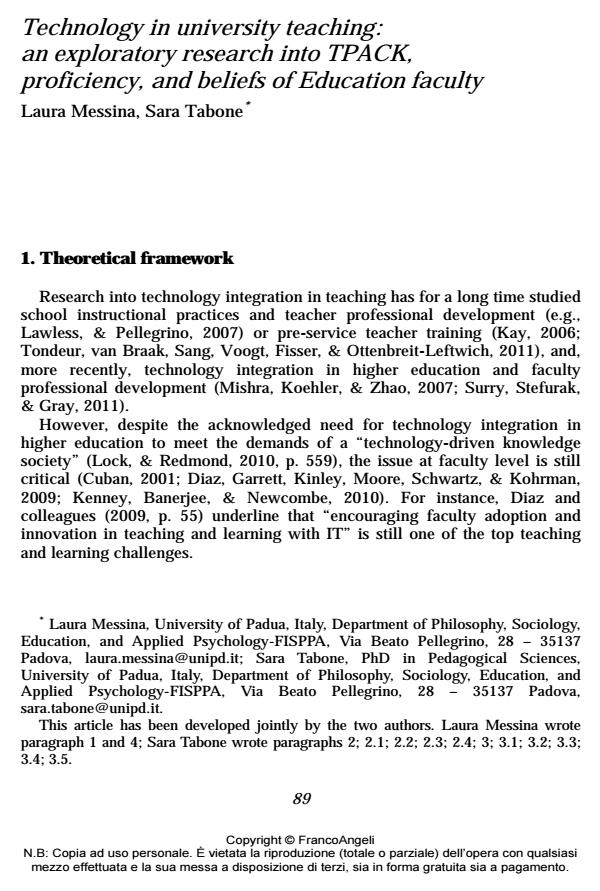Technology in university teaching: an exploratory research into TPACK, proficiency, and beliefs of Education faculty
Titolo Rivista CADMO
Autori/Curatori Laura Messina, Sara Tabone
Anno di pubblicazione 2014 Fascicolo 2014/1
Lingua Italiano Numero pagine 22 P. 89-110 Dimensione file 85 KB
DOI 10.3280/CAD2014-001009
Il DOI è il codice a barre della proprietà intellettuale: per saperne di più
clicca qui
Qui sotto puoi vedere in anteprima la prima pagina di questo articolo.
Se questo articolo ti interessa, lo puoi acquistare (e scaricare in formato pdf) seguendo le facili indicazioni per acquistare il download credit. Acquista Download Credits per scaricare questo Articolo in formato PDF

FrancoAngeli è membro della Publishers International Linking Association, Inc (PILA)associazione indipendente e non profit per facilitare (attraverso i servizi tecnologici implementati da CrossRef.org) l’accesso degli studiosi ai contenuti digitali nelle pubblicazioni professionali e scientifiche
Laura Messina, Sara Tabone, Technology in university teaching: an exploratory research into TPACK, proficiency, and beliefs of Education faculty in "CADMO" 1/2014, pp 89-110, DOI: 10.3280/CAD2014-001009